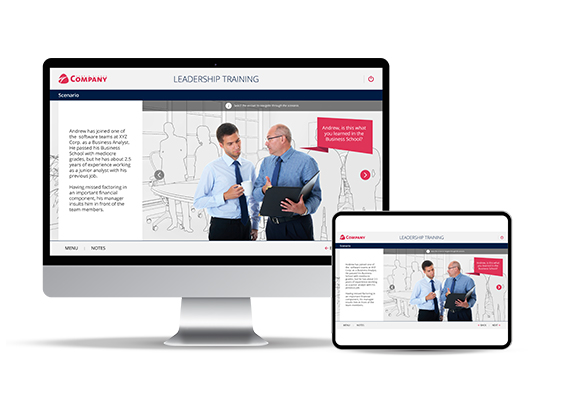Scenario-Based Learning Development
eLearning is a dynamic and vibrant subject with many associated facets. One such concept within eLearning is scenario-based training.
Dos and Don’ts of Scenario-Based Training
Scenarios take time to think, frame, and execute effectively. They certainly work well to simplify complex situations, but scenarios cannot be included everywhere.
Here are a few tips for building scenario-based training.
Instances Where Scenario-Based eLearning Works Well
Historically, many industries use scenario-based training to train workers and improve productivity levels and test critical thinking and decision-making of employees in high stress environments.

Compliance
Compliance courses often use scenarios to test a learner’s decisions based on a set of data points provided and situations created.
Safety
Manufacturing businesses often use scenarios to recreate safety and quick response situations. Scenarios are also used to recreate machine operating procedures.

Sales
Mock sales pitching is a form of scenario recreation and has traditionally been used by salespeople to practice their selling skills under various situations.
Customer interactions
Just like sales pitching, customer interactions are practiced in safe environments by customer relation specialists in a bid to maximize their problem-solving and objection handling skills.

Medical sciences
Doctors use advanced scenario recreation methods to practice early-stage diagnosis, surgery, and treatment. These scenarios range from simple to complex depending on the type of training.
Finance
Financial analysts use scenario-based training to practice predicting the stock market and determine alternate course of actions.

Contact us to Build Scenario-Based eLearning Courses
We understand the intricate nature of building scenarios and the measurement mechanisms needed to analyze the scenario outcomes. We have been at the forefront of scenario-based eLearning development since 2007 and have assisted multiple companies build scenario-based training to train both existing and new employees.
Contact us to know more about how we can assist your business with building its own scenario-based eLearning training.









